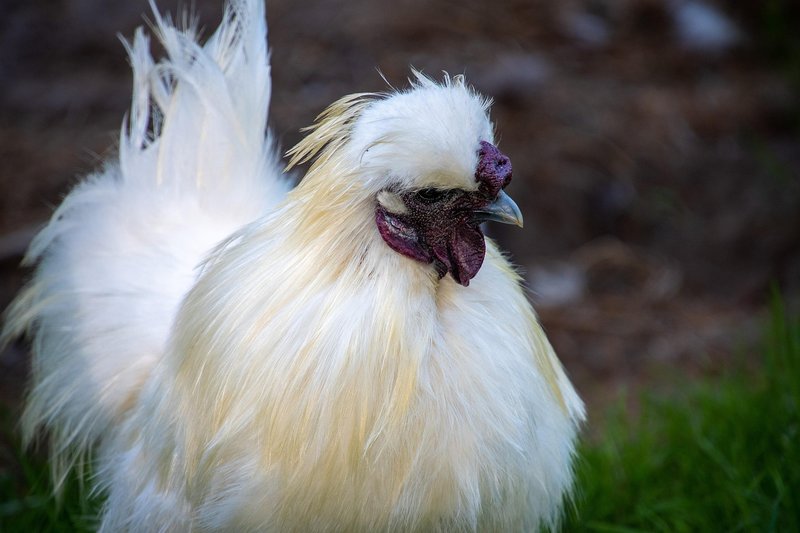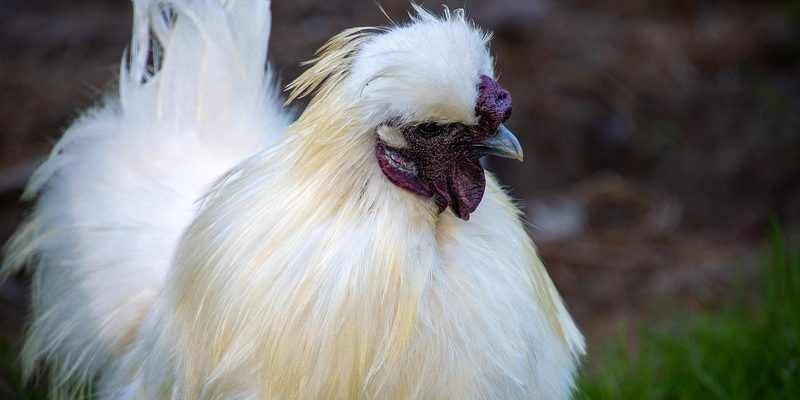
Imagine sitting at your favorite café, sipping coffee, and listening to a good friend talk about their day. That’s how chickens communicate; each cluck and chirp is like a little story. As you learn to decipher these sounds, you’ll not only deepen your bond with your Silkie but also become more attuned to their habits and needs. So, let’s jump into the fascinating world of Silkie vocalizations and what they truly mean.
Understanding Silkie Chickens
Silkie chickens are not your average backyard fowl. Renowned for their fluffy feathers that feel more like soft fur, these birds boast a friendly, docile personality. Silkie chickens are also smaller and have unique features, such as black skin and blue earlobes. They’re often kept as pets due to their charming demeanor, making them popular among families and enthusiasts alike.
What sets them apart is their distinctive way of vocalizing. While many chickens have a straightforward cluck or caw, Silkies have a melodious and softer tone. This unique style not only adds to their charm but also makes it easier for owners to understand their moods. Observing their behaviors and sounds can provide insight into their well-being, happiness, or if something might be troubling them.
As any Silkie owner will tell you, these birds have a lot to say. You might catch yourself pondering the meanings behind their various vocalizations, especially if you want to give them the best care possible. Part of building that relationship is learning to interpret those little sounds that layer their communication.
The Basic Vocalizations of Silkies
Silkie chickens produce several basic sounds that you can start to recognize. Here’s a quick breakdown:
- Clucking: This is probably the most common sound you’ll hear. It’s often a sign of contentment or a way to communicate with their flock.
- Chirping: When Silkies are younger or feeling a bit uncertain, they might chirp like little peeps. This often means they’re looking for comfort or reassurance.
- Growling: If you hear a low growl, it might be a call for protection. They could be feeling threatened or annoyed.
- Squawking: A loud squawk can indicate surprise or alarm. If you hear this, it’s a good idea to check on them.
These sounds may seem simple, but they carry layers of meaning. For example, a clucking sound can change when a Silkie is happy versus when they’re signaling for food. It’s like when a friend gets excited about a story versus when they just want to get straight to the point.
What Does Clucking Mean?
Clucking is perhaps the most prevalent sound in the Silkie’s vocabulary. Typically, this gentle sound indicates a sense of contentment. Picture your friend sharing a delightful experience; their voice has a certain rhythm when they’re genuinely happy. Silkies do something similar with their clucks.
When a Silkie is clucking, it may also be communicating with their flock or signaling that it’s time to eat. If you hear a chorus of clucks, it’s a good bet that the birds are enjoying their surroundings or alerting each other to food nearby. It’s their way of saying, “Hey, life is good!” So, next time you hear these little clucks, take a moment to appreciate how your Silkie is feeling.
However, watch for changes in their clucking. If the tone becomes more frantic or fast-paced, it can indicate stress or a need for attention. It’s like hearing your friend become more animated when they’re passionate—or possibly worried—about something. Recognizing these shifts will help you respond effectively.
Chirping and What It Signifies
Chirping, especially in young Silkies, is a soft, high-pitched sound that often evokes feelings of tenderness. Imagine a baby telling their parent they need something. In the context of adult Silkies, chirping can occur when they feel insecure or anxious. If a Silkie is chirping, it might be looking for comfort from its flock or owner.
It’s important to pay attention to the context when you hear this sound. For instance, if they’ve just been introduced to a new environment or another bird, you might hear them chirp more frequently. It’s their way of seeking reassurance and a connection. Just like when we talk to friends about our worries, Silkies express their feelings through this sound.
To help calm a chirping Silkie, spend some time around them. You might talk to them softly or give them a little cuddle, which can help them settle down and feel safe. In this way, you’ll build a stronger bond and ensure they know you’re there for them.
The Significance of Growling
Growling in Silkies can catch you off guard. It’s deeper and more guttural than other sounds and typically suggests they feel threatened. Think of this like when someone is annoyed or upset—they’re using a different tone of voice to express that emotion.
If you hear a Silkie growling, it’s essential to assess the situation. Look around to see if there’s something that might be bothering them. It could be another bird invading their space or even a sudden noise that startled them. Addressing their unease promptly can help soothe your Silkie and reassure them that they are safe.
It’s also worth noting that this growling can occur during mating behaviors, where males may growl at females. In this context, it’s more about asserting dominance than expressing distress. So, while growling is often a cry for help, it can also signal natural behaviors among the flock.
Understanding Squawking in Silkies
Squawking is a sharp, loud sound that typically means surprise or alarm. If you hear a sudden squawk, your immediate instinct might be to check for danger. It’s similar to when a friend suddenly shouts in excitement or fear—something caught their attention. In a Silkie, squawking often signals that they perceive a potential threat, whether it’s a larger animal or even a sudden movement in their environment.
However, it’s not just about fear; squawking can also indicate that a Silkie is asserting its place in the pecking order. If a bird feels that its space is being invaded, it might squawk to let others know to back off. It’s their way of saying, “Hey! This is my territory!”
If squawking becomes frequent, pay attention to the dynamics in your flock. It may be time to introduce new birds gradually or provide more space for your Silkies. Just like in human relationships, overcrowding or tension can lead to a noisy environment and stress among your feathery friends.
Caring for Your Silkie Through Vocal Understanding
Being attuned to your Silkie’s vocalizations can transform your relationship with them. When you understand what they’re trying to say, you can provide better care and create a more harmonious environment. Whether it’s ensuring they feel safe, finding out if they’re hungry, or realizing they need some space, these little details matter.
Spending time with your Silkies and observing their vocal patterns is key. You might even find that each bird develops its own unique sound or way of communicating. For example, if one Silkie is particularly vocal, it might have a signature cluck that distinguishes it from the rest.
Here are some tips for enhancing your connection with your Silkies:
- Spend time observing their interactions and sounds.
- Respond to their needs based on their vocalizations.
- Create a calm environment that minimizes sudden noises or changes.
By learning their language, you cultivate a deeper bond and foster a happy, healthy flock.
Understanding *Silkie vocalizations* can feel like cracking a secret code. Each sound they make reflects their personality and emotions. From the gentle clucks that convey happiness to the sharp squawks that signal alarm, these vocalizations create a unique language between you and your feathery companions.
Next time you’re with your Silkies, take a moment to listen. Try to interpret their sounds and observe how their body language complements what they’re saying. Not only will this enhance your relationship with them, but it will also ensure that you’re giving them the best life possible.
In the end, caring for Silkies is all about connection. By tuning in to their vocalizations, you’ll create a home where they feel safe, happy, and understood. So, grab your favorite drink, settle in, and enjoy the sweet symphony of your Silkie chickens!

